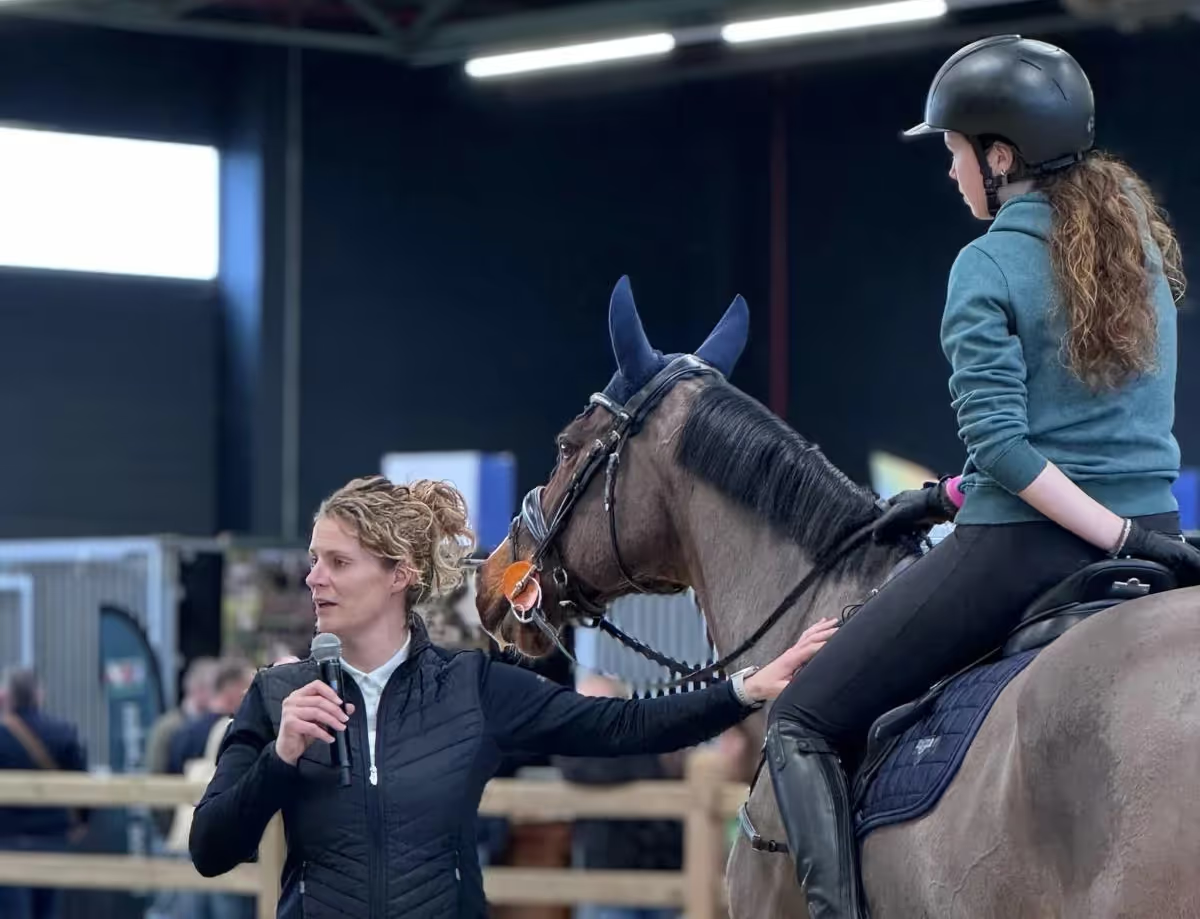
27 August 2024
Carolien Munsters is a specialist in applied equine sports physiology, with a PhD from the Faculty of Veterinary Medicine at Utrecht University. With a background in horse sports, she has been working for 15 years employing her expertise in sports physiology to enhance the training and performance of sport horses. In 2021, she founded Equine Integration along with show jumping rider and coach Chris Sorensen. Today, the company caters to top athletes, amateur enthusiasts, coaches, trainers, veterinarians, studbooks and other specialists in equestrian sports, nationally and internationally.
"You can learn a lot from working with different disciplines and different types of horses. It helps you to think out of the box", says Carolien Munsters. "We still know little about what constitutes an optimal training program for a horse. This has always fascinated me—as a rider and in my career, shaping the foundation of my PhD and later our company", she continues.
Equine Integration’s goal is to empower each horse, rider and their team of experts by validating and tracking insights, or providing new ones, to incorporate into their training and management. Conducting measurements during training sessions and competitions, the physical condition of the horse is closely monitored by the EI Potential app the company has developed, which tracks heart rate, GPS, and other key parameters. These data points are then analysed in depth using the company's specially designed software to optimise training and performance. Based on the results, a tailored training regimen can be created to optimise athletic performance in a responsible and healthy manner.
"One of the main goals of this work is to ensure that a horse is fit to compete in the broad sense of the word. This needs to be done on an individual level and adapted to the horse's specific discipline, performance level and other individual characteristics. We still perform standardised exercise tests to establish reference values for each horse but have additionally moved more towards daily monitoring. It is one thing to understand whether a horse is fit to compete at a specific moment in time. Understanding a horse's fitness over time and how to modify training to improve recovery and performance while reducing the risks of overtraining and injuries is key", Carolien Munsters says.
Scientific studies performed by Carolien and others show a strong link between fitness and the risk of injury, and that monitoring training sessions can provide important parameters for predicting injuries. This means that properly understanding an individual horse's fitness in relation to its training program and monitoring the training can help prevent injuries. Balancing training programs to manage workload effectively further reduces injury risks.
"Data from monitoring provides very good guidelines for how fit a horse is — but it’s not the full story. It’s very important to be able to read a horse and recognise a pain face, for instance. That’s why, apart from analysing data, I spend time observing the horses in competitions and training, as well as talking to riders, grooms, trainers, and veterinarians", Carolien Munsters comments. "Analysing training load is only one piece of the puzzle. To understand how a horse perceives certain training loads more fully, a broader approach is needed, including management, nutrition, health, and behaviour aspects", she explains.
Most injuries develop gradually over time due to an imbalance between the demands placed on the body and what the body can handle.
"An understanding of what the load is of a certain training, exercise or training programme and managing the balance between load and load capacity will help reduce the risk of injuries and also enable the horse to perform at the top of its ability. That’s why it’s important to monitor a horse over time", Carolien Munsters says.
Scientifically, Equine Integration aligns workload data with biomechanical, nutritional and veterinarian data to determine the relationship between training programs, competitions, rest periods, and these parameters. The aim is to gain deeper insights into how horses perceive specific workloads, considering not only physiological factors but also locomotion parameters, for example.
In addition to coaching sport horses in various disciplines to European and World championships and Olympic Games, Carolien Munsters is active as a researcher at the Faculty of Veterinary Medicine at Utrecht University and author of several peer-reviewed scientific articles with a focus on load and load capacity, performance and injuries in sport horses. Furthermore, she is active as a co-founding member of the Sport Horse Welfare Foundation and as an embedded scientist in equestrian sports for the Dutch Olympic Committee (NOC* NSF).
"By building databases for individual horses, we learn to understand their responses better. Informing riders and sharing knowledge, combined with their experience and understanding of the individual horse, brings a holistic approach to horse care, welfare, and performance optimisation", Carolien Munsters says.
Discussing the benefits of new technology for equestrians, Carolien Munsters describes monitoring horses using the EI Potential and Sleip apps as “having a personal sports science team on hand”.
"The gains are already evident, cutting injuries, improving performance, and enhancing the well-being of horses", she says.
On a personal level, Carolien Munsters loves working with her two young warmblood horses, both of which she has personally trained.
"With them, I can observe in real life how they react and respond to increasing workload, as well as to human contact. With them, as well as with many horses I meet professionally, I’ve learnt that some horses really love to work. And, of course, how important it is to build a strong bond with the horse."
Photo: Marielle den Broek